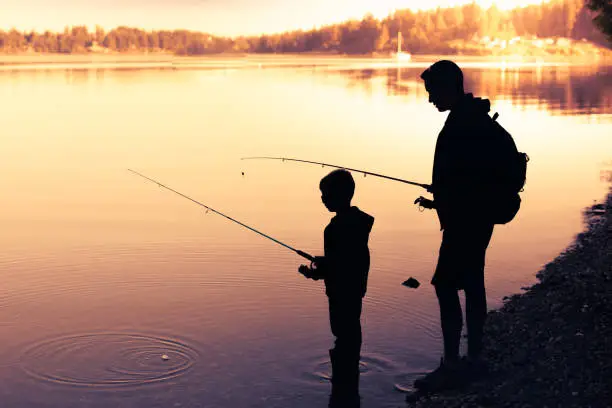Maine offers some of the finest fishing experiences in the United States, drawing anglers from near and far to its pristine lakes and winding rivers. This guide will provide essential information on the best fishing spots, local regulations, and what makes Maine a unique destination for fishing enthusiasts. With a diverse range of species, including bass, trout, and pike, anglers can find both tranquility and thrill in Maine’s waters. Understanding the state’s fishing regulations is crucial for both novice and experienced fishermen. Maine has specific guidelines that protect its aquatic ecosystems and ensure sustainable practices. This article will clarify those rules, helping fishermen avoid common pitfalls while maximizing their time on the water. From rustic lakes tucked away in the woods to fast-flowing rivers filled with adventure, Maine’s fishing opportunities are vast. Each location offers its unique charm and challenges, making it a compelling choice for anyone looking to cast a line. With this guide in hand, anglers can prepare for an unforgettable fishing trip.
Understanding Maine’s Diverse Fishing Locations
Maine offers a rich variety of fishing opportunities across its lakes, ponds, rivers, and streams. Each location provides distinct experiences and welcomes anglers of all skill levels. Knowledge of these areas enhances the fishing experience and helps plan successful trips.
Lakes and Ponds
Maine is home to over 6,000 lakes and ponds, each teeming with diverse fish species. Popular fishing spots include Lake Kinneret, known for its bass, and Sebago Lake, famous for its landlocked salmon. In addition to variety, these bodies of water often feature scenic views, making them perfect for recreational fishing.
Anglers must possess a valid Maine fishing license to fish in lakes and ponds. Regulations vary by waterbody, so it’s essential to check specific rules concerning catch limits, bait usage, and seasonal restrictions. Many lakes also provide access points and facilities for boat launches, ensuring convenient fishing outings.
Rivers and Streams
Maine’s rivers and streams, such as the Kennebec River and the Penobscot River, offer exceptional fishing conditions for anyone interested in fly-fishing or catch-and-release practices. The Kennebec is known for its population of Atlantic salmon, while the Penobscot boasts excellent trout fishing.
Anglers are encouraged to familiarize themselves with river regulations to ensure compliance. Many streams welcome waders, providing access to prime fishing areas, particularly during the evening hatch. Various fishing techniques can be employed in these flowing waters, making them ideal for both beginners and seasoned anglers.
Maine Fishing Regulations
Understanding the regulations surrounding fishing in Maine is essential for anglers. Specific rules affect recreational angling, including licensing and fishing zones, which vary across the state.
General Fishing Laws
Maine enforces several general fishing laws to protect aquatic ecosystems. All anglers must adhere strictly to these regulations, which include daily bag limits and specific fishing seasons for different species.
For example, the trout season typically opens on the last Saturday in April and runs through September 30. Species such as bass and pike have different regulations, including specific size and creel limits.
Anglers should familiarize themselves with restricted waters, where special fishing laws may apply. These rules can include catch-and-release policies or specific gear restrictions.
License Requirements
Every angler fishing in Maine is required to possess a valid fishing license. Licenses can be purchased online, at selected retail outlets, or at local town offices.
Maine offers several options: a regular fishing license, a one-day license, or a combination license for both freshwater and saltwater fishing.
Those under 16 do not need a license but must follow all fishing regulations. Specific discounts and options are also available for seniors and disabled veterans.
North vs. South Fishing Zones
Maine divides its fishing areas into North and South zones, each with distinct regulations.
In the North Zone, the fishing season typically runs from early May to late September, whereas the South Zone has varied season dates, often extending longer due to milder temperatures.
Different species may be regulated differently in each zone. For instance, certain lakes in the North Zone may have stricter limits on brook trout.
Anglers should consult the Maine Department of Inland Fisheries and Wildlife for current zone-specific regulations before fishing. Being informed about these regional differences ensures compliance and enhances the fishing experience.
Target Fish Species in Maine
Maine boasts a diverse array of fish species that anglers can target throughout its lakes and rivers. The state offers both cold-water and warm-water species, along with migratory fish that enrich the fishing experience.
Cold-Water Species
Cold-water species thrive in Maine’s cooler climates, making them popular among anglers. Brook trout are among the most sought-after, known for their vibrant colors and challenging catches. They are typically found in pristine streams and ponds.
Lake trout inhabit the deeper and colder waters of larger lakes. They can grow to significant sizes, providing a thrilling experience for those who pursue them. Brown trout and rainbow trout are also prevalent in many freshwater environments, having been introduced in various regions.
Lastly, landlocked salmon, which are a unique variant of the Atlantic salmon, are found in several lakes. They provide both challenge and excitement for anglers, particularly during the spring and fall seasons.
Warm-Water Species
Warm-water fishing in Maine includes a variety of bass species, which are highly popular among local anglers. Largemouth bass prefer warmer, vegetated waters, while smallmouth bass are commonly found in rocky areas and clear lakes.
Northern pike and tiger muskies add an adventurous element, often sought for their aggressive behavior. They present a different challenge due to their size and fighting ability.
Another notable species is perch, which are plentiful in many water bodies and can be an easy catch for family outings. These warm-water fish offer diverse opportunities and enjoyable fishing experiences throughout the state.
Migratory and Anadromous Fish
Maine’s rivers are home to various migratory fish, primarily striped bass and Atlantic salmon. Striped bass can be found in coastal regions and rivers, attracting many anglers during the spring and fall. They are known for their size and strength, offering a thrilling catch.
Atlantic salmon are iconic in Maine, with strict regulations in place due to their conservation status. These fish migrate upstream to spawn, allowing anglers a unique opportunity to fish for them during their journey.
In addition, the American shad runs are a hallmark of spring fishing in Maine. They travel long distances to spawn, providing an exciting challenge for those seeking them in freshwater rivers. The variety of migratory species makes fishing even more dynamic in the state’s waterways.
Fishing Techniques and Bait Selection
Anglers in Maine utilize a range of fishing techniques suited to various environments and species. Successful fishing often hinges on the right choice of bait and terminal gear. Understanding these elements can greatly enhance the fishing experience.
Fly Fishing and Trolling
Fly fishing is popular in Maine’s rivers and lakes, especially during the warmer months. Anglers often use artificial flies designed to mimic local insects. Common choices include hoppers, mayflies, and caddisflies. Check out some fly fishing gear here.
In contrast, trolling is effective in deeper waters. This method involves dragging baited lines or lures behind a moving boat. Anglers target species like salmon and lake trout. Common trolling techniques include downrigging, where weights bring lures to specific depths, and using planers to spread lines over a wider area.
Bait and Terminal Gear
Selecting the right bait is crucial for success. Legal forms of bait in Maine include live fish, minnows, and worms. Using baitfish like herring or smelt is effective for larger species.
Terminal gear must match the chosen bait. Commonly used gear includes hooks, sinkers, and swivels. Anglers often opt for circle hooks, which reduce gut hooking and increase catch-and-release success. For those using artificial lures, options like spinners and jigging spoons can be effective in attracting fish.
Seasonal Fishing Opportunities
Maine offers diverse fishing opportunities throughout the seasons. Anglers can engage in open water fishing during warmer months and switch to ice fishing as temperatures drop. Each season presents unique challenges and rewards.
Open Water Season
The open water season typically starts in late April and runs through September. This period allows for fishing in lakes, rivers, and coastal waters.
Popular species targeted include:
- Bass: Particularly Largemouth and Smallmouth, thriving in warm waters.
- Trout: Common in cold, clear streams and lakes.
- Salmon and Sturgeon: Found in various rivers, especially during spawning.
Anglers often use live bait, lures, or flies. Local regulations dictate specific catch limits and size. Smelts are also important for bait, particularly in rivers before the ice melts.
Ice Fishing Season
Ice fishing usually spans from December to March, depending on weather conditions. The ice thickness must be safe, typically at least 4 inches.
Popular ice fishing locations include:
- Sebago Lake: Known for diverse fish such as lake trout.
- Moosehead Lake: Offers a wide range of species.
Anglers often target species like:
- Brook Trout: Found near the shoreline.
- Perch: Easy to catch and popular among ice fishermen.
Essential gear includes ice augers, tip-ups, and insulated shelters. Regulations may specify allowed equipment and daily limits, emphasizing the importance of adhering to local guidelines for sustainable fishing practices.
Maine is filled with various fishing opportunities. From lakes to ponds to streams, there is something for every level of angler our there. Grab your gear and try your luck.

